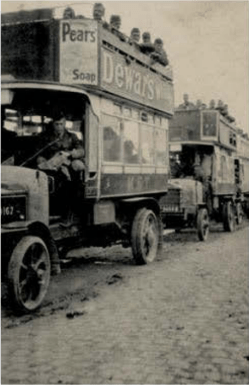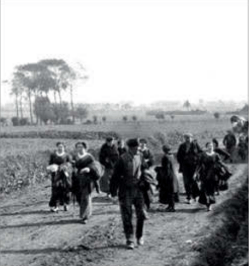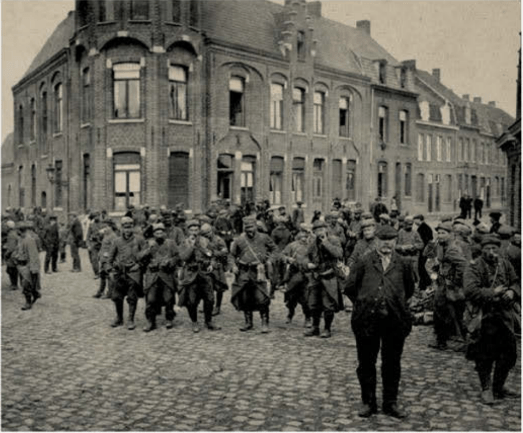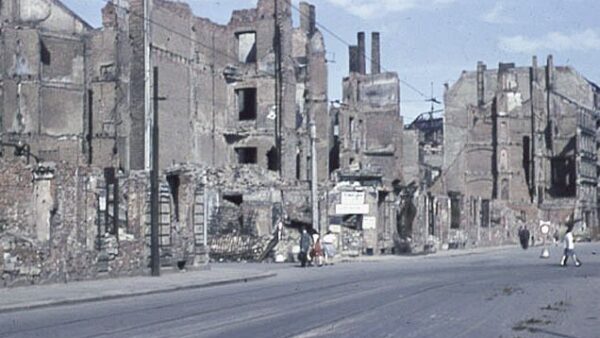BATTLE OF YPRES – TUE 20 OCT 1914 –SUN 22 NOV 1914
The First Battle of Ypres
The First Battle of Ypres, as it is now known in history, began with the German assault on October 20, 1914. It was an offensive on a large scale, from the Béthune area to the coast. Rupprecht’s Sixth Army, recently transferred from Lorraine, attacked towards the northeast from the direction of Lille. Between Ypres and Nieuport, the Fourth Army, which had just been formed, advanced to the west. In an extremely fortuitous piece of timing, Haig’s I Corps arrived at Ypres from the Aisne on 20 October and helped stabilize the situation there. In the La BasséeMessines sector, II and III Corps also repulsed German attacks.
The heavy losses among young and inexperienced German volunteers caused the fi ghting to be dubbed the Kindermord (“massacre of the innocents”). The attackers had far more success against the Belgians on the River Yser: Nieuport and Dixmude were held (the former by French 42nd Division, the latter by the French marines); but elsewhere the Belgians were forced back to hold the line of the Dixmude-Nieuport railway.
Bloody stalemate



This terrain is extremely low-lying, and in desperation, in late October, the sea defences were deliberately breached and the sea allowed to flood the land. This effectively blocked any additional German advances, making this area of the Western Front largely calm for the rest of the war. On 31 October, the Germans tried again. This time they concentrated on Ypres, using seven divisions commanded by General von Fabeck to assault the front between Messines and Gheluvelt. The Germans made significant progress being covered from heavily bombarded. Haig’s I Corps and Allenby’s cavalry were in the path of the attack and, exhausted, began to give way.
The Germans seized and held Messines Ridge, a battle in which the London Scottish became the first battalion of the Territorial Force, a reserve army of part-time soldiers originally raised for home defence, to go into battle. A stray shell fired farther north killed the British 1st Division commander and stunned the commander of the 2nd Division. After learning that his line had been broken, Haig sprang on his horse and went up to the front. Ypres was within the German army’s grasp, but they had missed the chance to seize it.
Battle Escalation and Counterattacks

The 2nd Worcesters were able to launch a counterattack at Gheluvelt and stabilize the situation as a result of delays in moving soldiers forward and the general disarray of the conflict. Foch, appointed by Joffre as commander of the French left wing, fed in reserves, including French XVI and IX Corps, and put General D’Urbal in command of all French troops in the Ypres sector. For the time being, the Allies had survived the crisis. Even while the battle did not completely stop, both sides used the following three days to recover, giving the Allies a much-needed reprieve.
On 1 November, the new commander of 1st Division reported to Haig that his men could not resist an “organized attack”. Over the next few days, more Allied troops reached Ypres, but the Germans, too, brought up another corps, which attacked on 11 November. South of the Menin Road, the British fought off the attacks, but north of it a fresh crisis developed. Once again, the Prussian Guards broke through the weakened defenders, bringing Haig’s I Corps to the point of defeat. During the process, the attackers weakened themselves, thus diminishing the impetus of the assault. The artillery of 2nd Division, its covering screen of infantry having vanished, continued to pound away at the attackers.
A force of batmen, cooks, headquarters staff and other “odds and ends” mounted a desperate counter-attack that did just enough, just in time, and then the 2nd Oxfordshire and Buckinghamshire Light Infantry made a decisive intervention. The battle persisted until 22 November, stabilizing the Allied line and ensuring the defense of Ypres, one of the few Belgian cities that remained under Allied control. The French and British held an awkward salient around the city, surrounded on three sides by the Germans.
The Bloody Stalemate of 1914
Since August 1914, the battles in the West have resulted in astonishingly high costs: the BEF has lost 86,000 people, including killed, wounded, and missing, and about 300,000 Frenchmen have died. Furthermore, in First Ypres alone, the Germans suffered casualties of at least 134,000, with 19,600 of them being deaths. The endeavor to win a swift battle of mobility had come to a standstill in the trenches. The First Battle of Artois, a French attack that started on December 14th, failed to overthrow it. But there was a common belief that this was only a temporary phase. As British, French and German soldiers held their trenches, their generals planned for a resumption of mobile warfare in the New Year.





